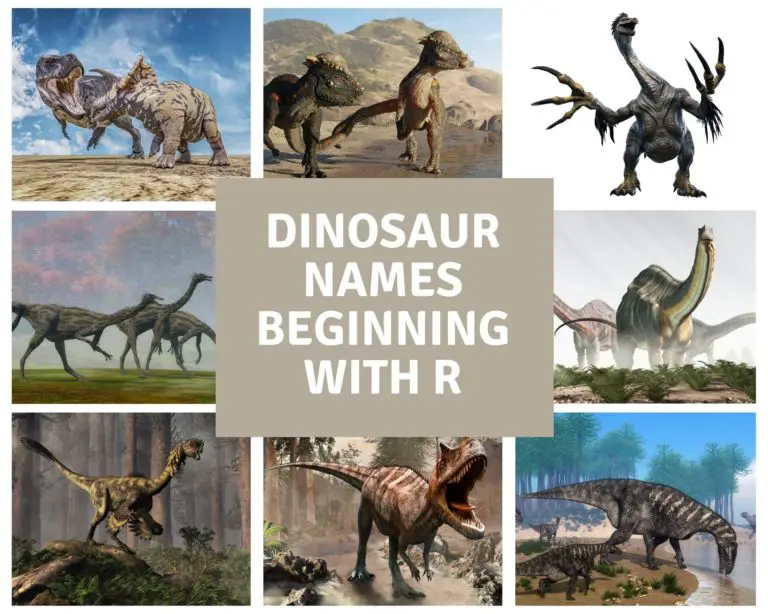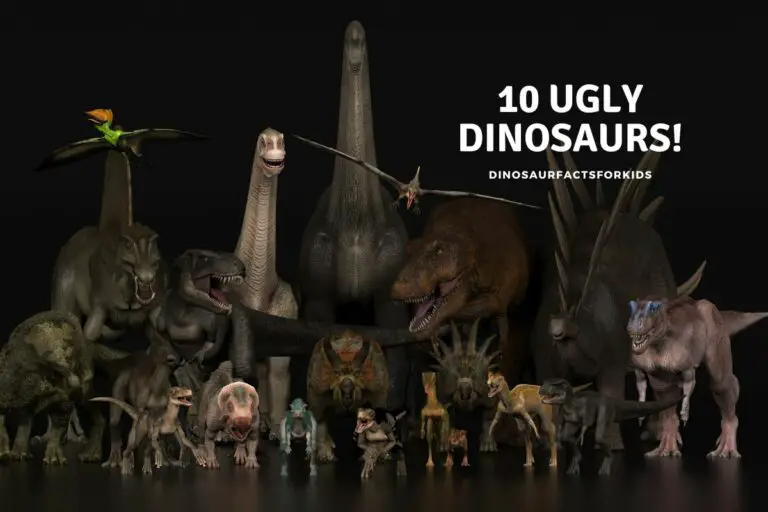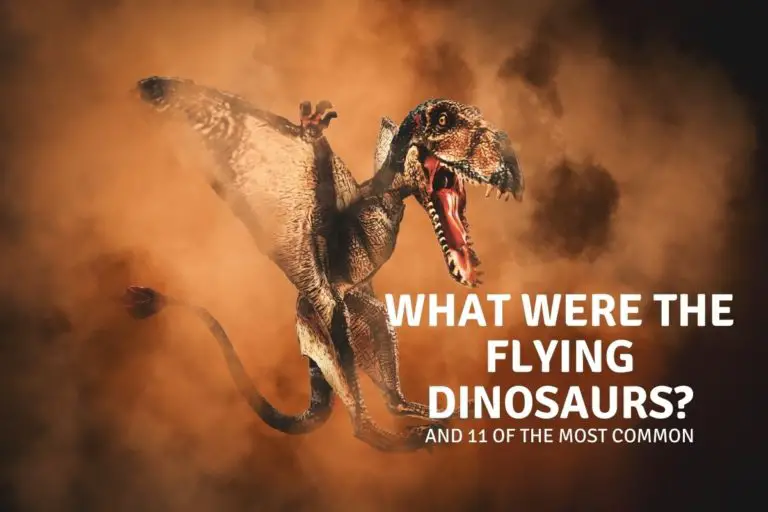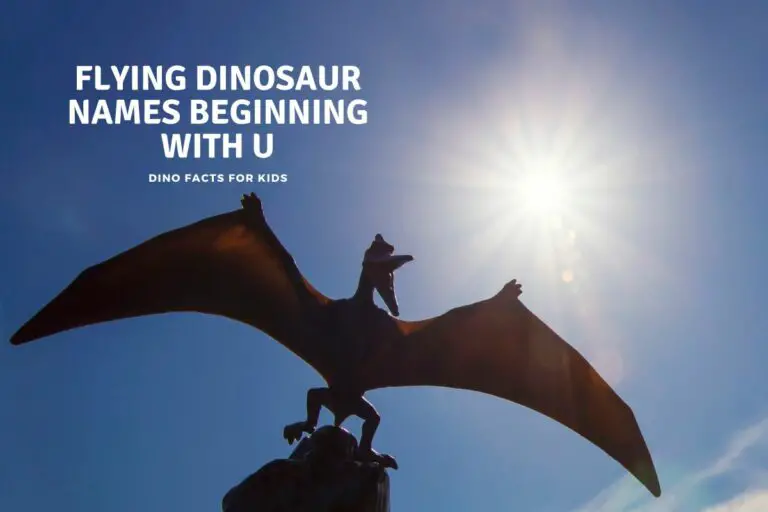Could Triceratops Swim?
When we think of dinosaurs, Triceratops is one of the first that comes to mind with its three-horned face. It’s easy to picture it walking around in forests, However that huge frill and metre long horns were huge, and being made of bone certainly not designed to help in swimming. So we ask, and answer the question here – Could the Triceratops swim?
While Triceratops swimming abilities remain speculative, it is currently thought that most if not all dinosaurs would have had some swimming ability. Considering its size, body structure, habitat, fossil evidence, and parallels with modern animals, Triceratops would likely have been able to swim.
So while most dinosaurs would have had some swimming ability of varying degrees, not all had a distinctly un floatable neck frill and huge horns. We take a look at if these would have sent a triceratops head first to the bottom or if like other large animals it would still have been able to swim to some extent in the article below.
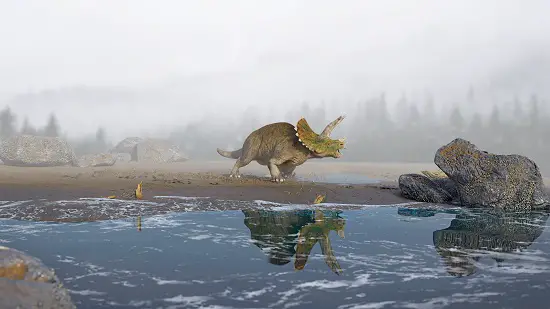
Background on the Triceratops
Triceratops is easily recognized by its three horns and large frill. It was a big, plant-eating dinosaur that roamed parts of North America about 66- 70 million years ago. They could reach about 9 meters (30 feet) long and weighed between 6 to 12 tons. That’s as heavy as two elephants!
Triceratops lived around 68 to 66 million years ago in places that are now known as the Great Plains of the United States and Canada and would have had direct contact ( with a more capable swimming dinosaur it has to be said) with the T-Rex
These areas were thought to be filled with dense forests and rivers. How the Triceratops lived and interacted with these environments is a topic of continued research did it find a place to cross, or jump in head first and swim!
We also take a look at if a T-Rex could swim, as well as if a Stegosaurus could swim here on the site as well.
Theories of Dinosaur Swimming Capabilities
While the image of a swimming dinosaur might seem unusual, it’s not entirely out of the question. Some dinosaurs might have been good swimmers, while others, not so much. The body shape, size, and weight of a dinosaur can all play a part in its ability to swim.
Big, heavy dinosaurs like the Triceratops would have had different challenges in the water than smaller, lighter ones. However, some large modern animals, like elephants and hippos, and some species of rhinos, as we will see below, are surprisingly good swimmers.
What about the Triceratops
if size, up to a point, is not a barrier to swimming, then we need to look at some other features of a Triceratops that may have caused a problem if it tried to swim. the most obvious is the huge crest and neck frill which being made of bone, perhaps caused serious issues if it found its self out of its depth.
Considering these factors, it’s possible that Triceratops could have been capable of at least some kind of movement in water though to what degree and how safely needs some further thought.
So let’s dive (ha!) deeper into this topic and get to the bottom ( ha!) of the triceratops swimming ability.
Could the Triceratops Swim?
When we think about Triceratops and swimming, there are several factors to consider.
- Firstly, the sheer size of this dinosaur is important. Weighing between 6 to 12 tons, it was a hefty creature. This could have made it difficult to move in water, or conversely, its size could have increased its buoyancy, allowing it to float more easily.
- The body shape of the Triceratops is another key factor. Its large, bony frill and three horns might have acted as a counterbalance while swimming, similar to the keel of a boat. However, these could also have acted as a sort of sail, making the dinosaur unsteady in water.
- Additionally, the Triceratops’ legs were sturdy and relatively short compared to its body. While this might have made swimming difficult, it’s worth noting that some modern animals with similar leg structures, such as rhinoceroses (some) and hippos, are capable swimmers.
- Lastly, considering the Triceratops’ habitat is essential. Living in areas with dense forests and rivers, they might have needed to wade through water or swim across rivers at times,
Current thoughts in the Sciefitic world are that all dinosaurs would have been able to swim to a certain degree, although we have reservations on the massive sauropods, and if this is the case then Triceratops would have had some swimming ability.
Despite that huge heavy neck frill and its horns, it was a muscle packed dinosaur, and the support water may have given its head may actually have helped ( in a small way) when it was in deeper water.
it would not have been gamboling around like a sea otter, but if conditions were favorable then even a huge heavy triceratops would have had some swimming ability.
Fossil Evidence and Expert Opinions
When we look at the fossil records, we find some Triceratops fossils in areas that used to be rivers or marshlands, suggesting they lived near water sources. However, it’s important to remember that this doesn’t necessarily mean that they swam often or by choice.
Dinosaurs like Triceratops could have simply gone to these areas to drink water or find food.
As for expert opinions, there has been research on another unlikely candidate for a dinosaur swimmer – the Stegosaurus. has found suggested evidence that this almost equally massive dinosaur could swim, with evidence to swim marks / footprints in Yorkshire.
Some researchers argue that Triceratops’ size and body shape would have made it a poor swimmer. However, others believe that, like many large, modern animals, Triceratops might have been capable of at least wading / paddling through water effectively.
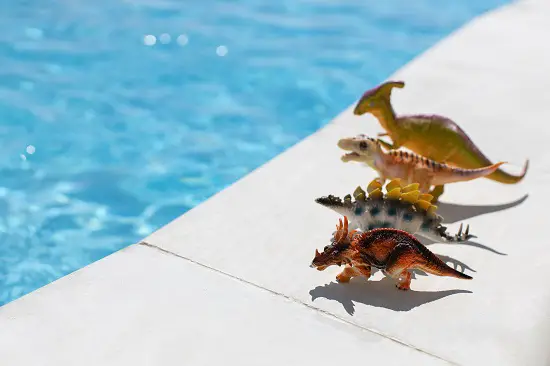
Evolutionary Considerations
While Triceratops’ horns and frill are usually associated with defense and possibly courtship, they could have influenced its buoyancy and maneuverability in water.
For instance, the large frill could have provided balance in water, similar to the role of a keel in a ship, or would it have made the triceratops top heavy and made it difficult to keep its head out of the water.
The evolution of strong, sturdy limbs and all that power they held within them could have been beneficial for both walking on land and wading / paddling or perhaps even swimming through water.
While these features didn’t evolve for a life in the water, that we know of, they may not have hindered it when the need to swim arose as much as their appearance suggest they might.
‘Looking at an elephant or a horse does not scream “that’s a swimmer right there”, and maybe the same can be said about triceratops!
Comparison to Modern Animals
Comparing the Triceratops to existing animals can give us some ideas on its potential swimming abilities.
Elephants, for instance, are also large and heavy creatures, yet they can swim long distances. They do not of course have metre long horns, or that boney frill. they do though have huge tusks that can and often are longer than a triceratops horn, and are also made of bone.
So while its not a direct comparison it does suggest being “head heavy” is not an insurmountable obstacle in the water.
Similarly, rhinoceroses, which have a body structure somewhat akin to Triceratops, are able to swim and even remain submerged while keeping their snouts above water. These abilities do not extend to all species of Rhino though, African rhino are poor swimmers and do not do well ( at all!) in deeper water when compared to their Asian Rhino counterparts.
Hippos, with their massive bodies and short legs, are known for their impressive aquatic abilities. Although they have evolved to be semi aquatic, which no one suggests the triceratops was.
These are merely comparisons and not conclusive evidence of course, but they do present the possibility that Triceratops could have had some ability to move in water, be it swimming or wading.
You can check out what we think of other dinosaurs swimming abilities here on the site with the links below.
- Could Stegosaurus Swim
- Could Tyrannosaurus Swim
- Could Triceratops Swim
- Could Pyroraptor Swim
- Could Velociraptor Swim
Conclusion
So could the Triceratops swim? Given its physical attributes, habitat, fossil evidence, and comparisons with modern animals, it’s possible that Triceratops had some capacity to move in water not likely to be in anyway graceful, but that’s not a judgement.
1 minute of watching me swim could never be called graceful either, but like the triceratops i can make my way through the water without, for the most part, causing stress, injury to myself or others!
References
- https://www.nationalgeographic.com/magazine/article/swimming-dinosaur-new-fossil-natovenator
- https://www.reddit.com/r/ARK/comments/3cqueo/can_the_triceratops_swim/
- https://www.kids-dinosaurs.com/swimming-dinosaurs.html
Hi, I am Roy Ford a General Studies and English Teacher who has taught all over the world. What started as a fossil collection became a great way to teach, motivate and inspire students of all ages and all over the world about dinosaurs and from that and children’s love of dinosaurs came the site dinosaur facts for kids, a resource for all ages.

